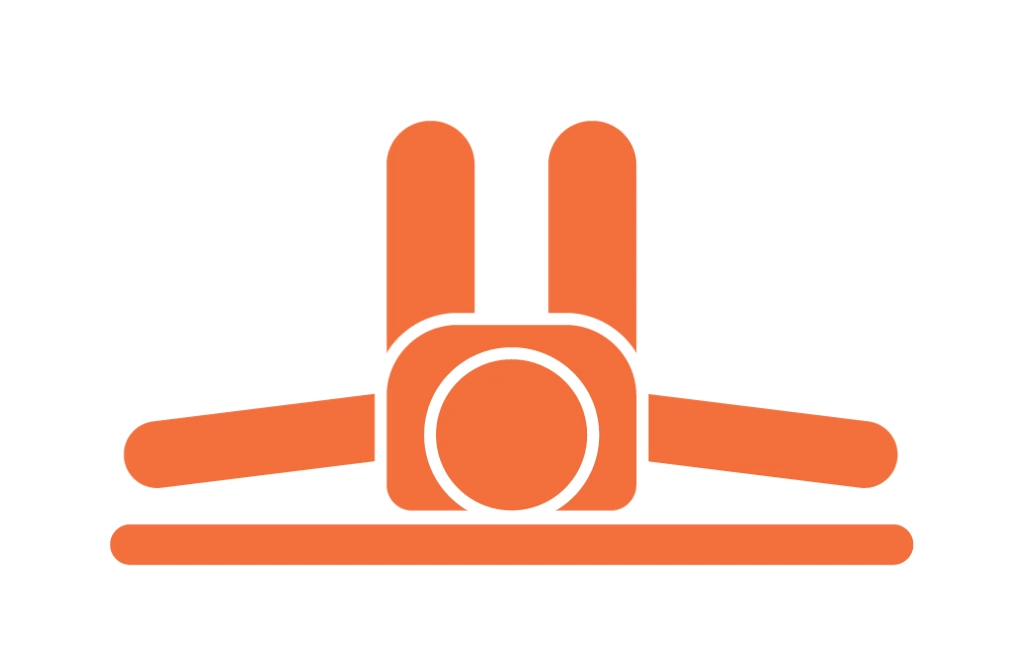Ankylosis spondylitis
 exercises
exercises

Danni Turner, Physiotherapist
If you’ve been diagnosed with ankylosing spondylitis (AS), you will know how important exercise is in managing your condition. While it’s no secret that exercise is good for you, it’s important to understand the kinds of exercise that are helpful specifically when living with AS – and how to stay motivated along the way.
Before incorporating new exercises into your routine, it is advisable to consult with your rheumatologist and healthcare team (e.g., physiotherapist). They are best suited to provide personalised advice and assess the safety and appropriateness of the exercises for you.
Why should I exercise?
Research has shown staying active with a regular exercise program can help improve AS symptoms.1,2
Regular physical activity may help you:1-3
- Reduce pain and stiffness
- Strengthen your muscles
- Maintain good posture
- Maintain mobility in your spine
- Combat fatigue
- Alleviate low mood
- Lose weight
- Keep your heart in good shape
- Improve your sleep and your overall health
How often should I exercise with AS?
Incorporating regular exercise or movement into your daily routine can be highly beneficial. As with other inflammatory conditions, it’s important to keep moving to reduce pain and stiffness and strengthen your muscles.1-3
On the question of ‘how much is too much?’, you should know that the old saying of ‘no pain, no gain’ doesn’t apply when living with AS and that it’s ok to modify your regimen to avoid overdoing it. While regular, high-impact exercise is a great goal in theory, exercise shouldn’t cause you lingering pain or leave you in such a state that you’re unable to exercise again the next day.
Hear how Matt manages his AS with exercise.
“The importance of managing your mental health when you have AS is super important for me and the best way that I’ve found to do that, is through exercise and just being active.
That’s always the part of my day that I look the most forward to, and it has always been my first port of call to getting my body to feel better.”
*Patient experience is unique to the individual. For further information please talk to your doctor. Information is intended for Australian residents only and is not intended to replace the advice of your healthcare professional.
Should I exercise on ‘bad’ days?
While it can feel like a challenge to stay motivated, especially on days when you feel pain or tired, it can be helpful to find ways to stay active when living with AS.
In addition to choosing the right kind of exercise for you, it can help to set realistic exercise goals, and to have a plan in place for ‘bad days’ when painful flare-ups make your regular exercise regimen feel out of reach.
If you’re having more ‘bad’ days and struggling to exercise with AS or would like more information about getting back to the activities that help you feel energised and strong, your rheumatologist and healthcare team are the best people to help.

What kind of exercises should I do?
The level and type of exercise that can be done varies from person to person. Some people may be able to do a variety of exercises, whereas others may only be able to do very low-intensity exercises or some basic stretches.1
Your rheumatologist and healthcare team (e.g., physiotherapist) are the best people equipped to help you design an exercise plan tailored specifically to your needs, but you may want to consider a mixture of whole-body exercise as well as targeted stretching and strengthening exercises specific to your AS for a well-rounded approach.
Our expert physiotherapist, Danni Turner, has prepared a simple stretching exercise program that you can do every day to help you stay flexible.
Three types of exercise you could discuss adding to your routine with your doctor include:
- Cardio-based exercise, such as walking or cycling.
- Water-based exercise such as swimming, aqua aerobics or hydrotherapy.
- Low-impact exercise such as yoga, pilates or gentle stretching.
Stretching Exercises For Ankylosing Spondylitis
 Seated Rotation
Seated Rotation
- Sitting straight on a chair with your head facing forward, place your left arm behind your left buttock and your right hand on your left knee.
- Rotate your trunk looking over your left shoulder until you feel a slight stretch but are still comfortable. Hold position for a few seconds.
- Swap sides and repeat exercise. Complete two turns per side.

 Head turning
Head turning
- Sitting on a chair, slowly turn your head to look over your shoulder while keeping your trunk facing forward. Place your left hand behind you to stop extra rotation. You may place your right hand on your left jaw to help your head turn a little further.
- Slowly turn your head back to the centre and repeat on the other side. Repeat the exercise twice on each side.

 Truck curl and stretch
Truck curl and stretch
- Begin sitting in a chair in an upright position facing forward with your hands on your knees. Slowly roll down the spine one section at a time, running your hands down the legs until you feel a stretch through your spine.
- Let your head hang heavy and hold for a count of 10.
- Slowly roll your spine back to an upright position, bringing your palms facing forwards and feeling a stretch across the chest. Repeat the exercise.

 Full back stretch
Full back stretch
- Beginning in a four-point kneeling position with your hands directly under your shoulders and knees directly below your hips, slowly bring your bottom towards your heels and your chest towards the floor as you breathe out.
- Slowly move back to the starting position and repeat the exercise, trying to stretch back a bit further each time.

 Back arch
Back arch
- Lay down flat on your stomach and raise the top half of your body slightly off the floor by propping up your elbows. Sink your spine, chest and shoulder blades down toward the floor. Hold for a few seconds.
- Relax and lower your body back down, returning to a flat position on your stomach. Remain here for a few seconds then repeat exercise.

Strengthening Exercises For Ankylosing Spondylitis

 Bridge
Bridge
Lying on your back, bend the knees and place feet flat on the floor. Lift the pelvis and the lower back off the floor. Hold for 5 seconds, then lower down slowly.

 Hip and pelvis rotation
Hip and pelvis rotation
Lie on your back with hands above your head. Bend your knees and roll them slowly to one side. Hold for 5 seconds and then return the knees to centre. Repeat 5 times on each side.

 Superman
Superman
Kneel on the floor on all fours. Lift your right arm and left leg until they are parallel to the floor. Lower and repeat with the other arm and leg. Repeat 5 times on each side.
This information is general information for people with AS and may not suit all individuals. It does not take your own circumstances into consideration. Your team of healthcare professionals are the best people to advise you on what is suitable for you depending on the severity of your condition and your management plan.
References:
- Arthritis Australia. Taking control of your ankylosing spondylitis. Available at: https://arthritisaustralia.com.au/wordpress/wp-content/uploads/2020/09/Ankylosing-Spondylitis-WEB-2019.pdf
- Spondylitis Association of America. Exercise. Available at: https://spondylitis.org/about-spondylitis/treatment-information/exercise/
- Arthritis Foundation. How to beat arthritis fatigue. Available at: https://www.arthritis.org/health-wellness/healthy-living/managing-pain/fatigue-sleep/how-to-beat-arthritis-fatigue

Ready to take control of AS?
Your rheumatologist and healthcare team are your best allies in taking control of AS. It doesn’t matter whether it’s been one or many years since your diagnosis with AS, it’s never too late.
If you think AS is holding you back or impacting your life, it’s time to talk to your rheumatologist about your goals and how you’re managing. Don’t let AS hold you back, take control.
Download the guide to help you make the most out of your conversations with your doctors.
Download the Conversation GuideDownload the Conversation Guide

